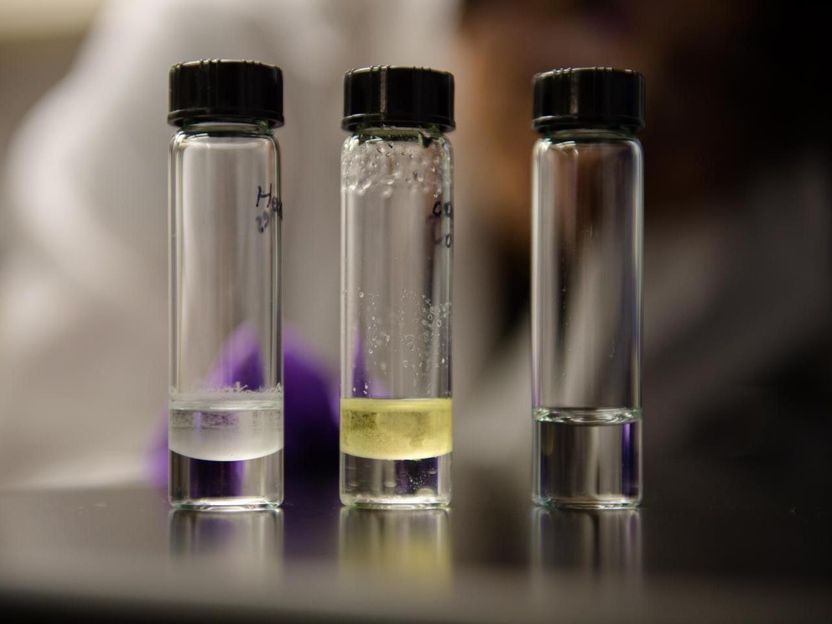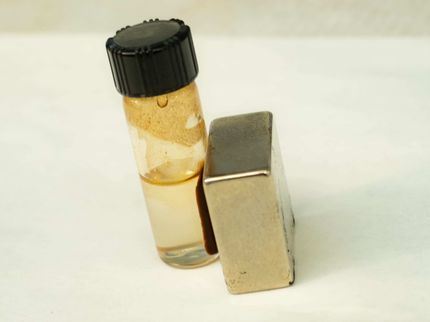Shaking the nanomaterials out
Advertisement
Purifying water and greening nanotechnology could be as simple as shaking a vial of water and oil. At least that's the case for a new method to clean contaminated water full of unwanted nanomaterials.

After shaking, the oil and water in the vial separate, trapping unwanted nanomaterials in the bottom of the oil layer.
Michigan Tech, Sarah Bird
Nano implies small--and that's great for use in medical devices, beauty products and smartphones--but it's also a problem. The tiny nanoparticles, nanowires, nanotubes and other nanomaterials that make up our technology eventually find their way into water. The Environmental Protection Agency says more 1,300 commercial products use some kind of nanomaterial. And we just don't know the full impact on health and the environment.
"These materials are very, very tiny and that means if you try to remove them and clean them out of contaminated water, that it's quite difficult," says Dongyan Zhang, a research scientist at Michigan Technological University. She adds that techniques like filter paper or meshes often don't work.
Instead, shaking up oil and water traps the nanomaterials, which can be easily removed. The process clears out nearly 100 percent of nanowires, nanosheets, nanotubes and other one- and two-dimensional nanomaterials. Only zero-dimensional nanospheres are still too small to grab.
Original publication
Most read news
Original publication
Bishnu Tiwari, Dongyan Zhang, Dustin Winslow, Chee Huei Lee, Boyi Hao, and Yoke Khin Yap; "A Simple and Universal Technique To Extract One- and Two-Dimensional Nanomaterials from Contaminated Water"; ACS Appl. Mater. Interfaces; 2015
Topics
Organizations
Other news from the department science

Get the chemical industry in your inbox
By submitting this form you agree that LUMITOS AG will send you the newsletter(s) selected above by email. Your data will not be passed on to third parties. Your data will be stored and processed in accordance with our data protection regulations. LUMITOS may contact you by email for the purpose of advertising or market and opinion surveys. You can revoke your consent at any time without giving reasons to LUMITOS AG, Ernst-Augustin-Str. 2, 12489 Berlin, Germany or by e-mail at revoke@lumitos.com with effect for the future. In addition, each email contains a link to unsubscribe from the corresponding newsletter.





























































